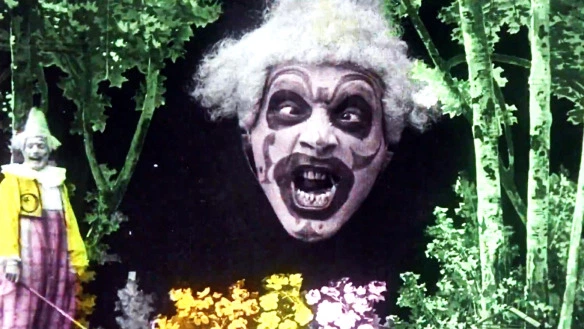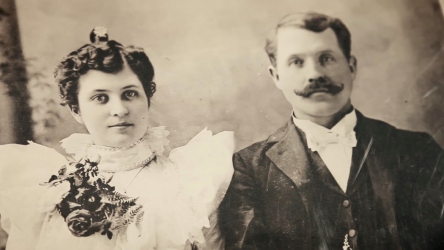My follow-up to the dismal 2036 was such a delightful love song to small-town America, it completely erased any negative feelings from the previous films, as well as most memories of it. Check it out:

Zahs, or possibly Santa Claus
So, there’s a guy, Michael Zahs, a retired history teacher who, 35-odd years ago—in his first week of marriage!—discovered an estate sale (in a small town in Iowa!) for a turn-of-the-century entrepreneur/inventor named William Franklin Brinton. Brinton was one of these guys who, in the early days of film, would take reels of film around the heartland of America and put on shows! This is, quite literally, how the movies began out in the heartland, with those circuits being kept alive into the VCR era.
Brinton himself built (had built? was behind?) the State theater in Iowa, the oldest continuing running theater in the world, where he and his wife would put on the show.

Not from the movie but from a Guiness Event celebrating the theater.
As directors Tommy Haines and Andrew Sherburne reveal the story to us, Zahs is revealed as a kind of eccentric, knowing all the stories and history behind so many items and landmarks and sometimes just trees. Zahs tells us the story of Brinton in tantalizing vignettes, such as the fact that his house (still standing) has a flat roof, per his design, so that he could land his flying machine on it.
I couldn’t help but feel we’d lost something in modern days. Brinton didn’t just build a landing pad for a flying machine he built an actual flying machine. Well, he built an actual machine, but it didn’t fly and, apparently, a mob gathered to watch him destroy it after it failed. Brinton was a cutting-edge, technophile, American entrepreneur that—even though we only meet him through his actions—typified Gilded Age sensibilities.
Zahs himself emerges as a hero of an entirely different sort. He’s someone who cares. He cares enough to store cans of films and Brinton memorabilia in his house for decades when (impossibly it seems now) nobody cared. I’m sorry to keep italicizing things but nobody cared even though among these cans were lost films of Georges Méliés, the father of cinematic special effects.

Look, it’s a tiny man! Or a giant head! Maybe both!
As we go through the story, and Zahs’ struggle upward to get recognition for Brinton, we start caring about all these little things, too. (There’s a nice little vignette where Zahs puts his nativity scenes up, a collection I would’ve liked to learn more about.) Ultimately, the movie is a kind of love song to small town America, to American history, to movie lovers, and Zahs becomes a heroic figure on his own.
He sort of reminds me of Iris Apfel. If you remember that charming lady, she had a way of taking dime store junk and just imbuing it with her own aesthetic elan vital (for lack of a better word) so that, by the time she was done with it, it was something more stylish or just flat out beautiful. And she seemed to have a limitless capacity to do this, so while having more stuff than a hoarder, it was all organized and stored neatly in homes and warehouses across the world.

The Brintons, in their prime.
Zahs does a similar sort of thing with history. He finds the interest in everything he touches. In places where most of us would just see what’s there now (and just barely that), he looks for what was there—and of course there are rich histories all around for those who care to look. Part of it, in fairness, is that he’s in a part of the country that has aged slowly—big cities tend to bury their pasts quickly as possible—but the fact that he stewarded something of obvious cultural value while the rest of the world caught up to its (again, obvious) value.
We get a nice happy ending where he gets to premiere the video, and his long-suffering (and camera shy?) wife gets to see Italy (and also her husband lauded for his efforts), and the Smithsonian or AFI or some other official institution finally gets around to examining his find.
On the three-point Blake Documentary scale:
- The subject matter is great, though deceptively so, like The King of Kong, since Zah could just be a hoarder, except for his historical awareness.
- The style might be described as “staid”, but not in a bad way. It’s got a deliberate pace that fits perfectly with the subject matter and breathes just enough to give weight and life to everything.
- The bias, such as it is, is just one of general validation, which is fine. There’s no politics evident, though sadly you might become aware of the fact that the little churches and community groups respectfully portrayed here get approximately zero time in mainstream media these days.
It definitely salvaged an afternoon that began with 2036.

He sincerely and effectively wears overalls.
